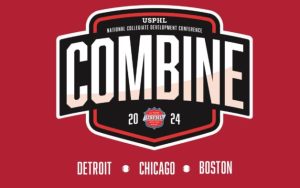From the Trainer’s Room: Taking a look at flexibility vs. mobility in sports
 Flexibility and mobility typically get mistaken as the same thing, but they are very different.
Flexibility and mobility typically get mistaken as the same thing, but they are very different.
Flexibility can be defined as the range of motion of a single joint or the ability of a single joint to move freely such as your hip, shoulder or knee.
Mobility can be defined as the ability of one or more joints to move freely during movements such as squatting or lunging.
According to Mike Robertson of the International Youth Conditioning Association, flexibility is merely a component of mobility.
Mobility includes tissue length, neural control/stability and joint architecture. In other words, can you perform movements with proper mechanics, stability and strength. A perfect example of this could be a hockey player fending of an opponent while driving to the net with the puck on his stick.
Both lack of flexibility and lack of mobility can lead to decreased performance and increased incidence of injury, but mobility is more correlated with athletic movements therefore have more of an effect in sports.
Since flexibility can be seen as an important part of mobility, it should not be ignored in a training program since limited flexibility will affect mobility.
However, mobility training should be a key part of any program and can typically be added throughout training. A few examples of mobility exercises are:
Ankle Rocks: Stand in front of a wall with your foot flat on the ground and toes pointing towards the wall. Bend your knee and move it towards the wall, flexing your ankle and then moving back to your starting position. Repeat for ten repetitions on each side for two to three sets.
Lunge with a Rotation: Lunge forward getting your knee slightly over your toes and thigh just above parallel to the floor. Reach across your body towards the leg in front of you. Extend your arm during the trunk rotation so arm is now perpendicular to your front thigh. Alternate sides for each lunge and perform two to three sets of ten.
Overhead Scapular Rotations: Stand up against a wall with your back flat against the wall from your waist to your shoulders. Raise your arms to shoulder height with your elbows bent at 90 degrees. Extend your arms overhead until your arms are straight and elbows are next to your ears. The goal is to maintain contact of your elbows and wrists to the wall while moving your arms overhead and maintaining your original back position flat against the wall.
Chris Phillips ATC, CSCS is a former athletic trainer in the NHL with the Mighty Ducks and Capitals and currently owns Compete Sports Performance and Rehab in Orange County. He can be reached at chris@competeperformance.com and by visiting www.competeperformance.com.
(April 12, 2021)







